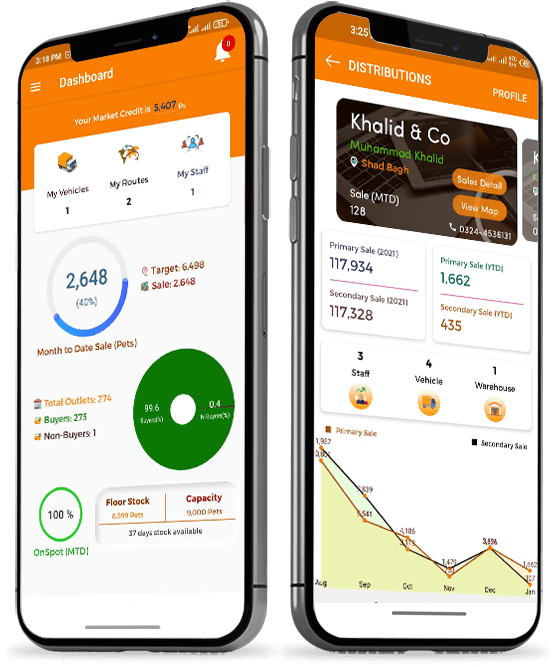Introduction:
In today's competitive market, managing secondary sales is crucial for the success of any business. Secondary sales refer to the sales made by distributors or retailers to end customers. Gicoh Secondary Sales Management (GSSM) is the process of managing these sales channels, which involves activities such as forecasting, inventory management, sales tracking, and performance analysis.
In this article, we will discuss the importance of GSSM and its benefits for businesses, the key features of a GSSM solution, and how businesses can implement an effective SSM strategy.
Table of Contents:
- Why Gicoh secondary sales management is important
- Benefits of Gicoh Secondary Sales Management
- Key Features of a Gicoh Secondary Sales Management Solution
- Implementing an Effective Gicoh Secondary Sales Management Strategy
- Conclusion
Why Gicoh Secondary Sales Management is Important:
Secondary sales are an important aspect of any business, as they account for a significant portion of revenue generation. Managing secondary sales involves the process of tracking and analyzing the sales data from distributors and retailers, which can help businesses make informed decisions about inventory management, product distribution, and marketing strategies.
Effective secondary sales management can also help businesses identify areas where sales are lagging and take corrective measures to improve sales performance. It provides insights into the buying behavior of customers, which can be used to optimize sales and marketing strategies.
Benefits of Gicoh Secondary Sales Management:
There are several benefits to implementing Gicoh's secondary sales management solution for businesses:
- Increased Sales Performance: By tracking and analyzing sales data from distributors and retailers, businesses can identify areas where sales are lagging and take corrective measures to improve sales performance.
- Improved Inventory Management: A good SSM solution can help businesses optimize inventory levels by providing real-time insights into stock levels and demand trends.
- Better Forecasting: GSSM can help businesses forecast future demand based on historical sales data and trends, which can help them plan their production and distribution accordingly.
- Improved Collaboration: GSSM can improve collaboration between different stakeholders in the sales channel, including distributors, retailers, and manufacturers.
- Cost Reduction: By optimizing inventory levels and forecasting demand accurately, GSSM can help businesses reduce inventory carrying costs and minimize stock outs.
- Integration Friendly: GSSM offers the benefit of being integration-friendly, allowing for seamless communication with other software applications. This can save time and improve efficiency in business processes, resulting in better overall performance.
- Easy to Setup and define parameters: GSSM is easy to set up, requiring minimal effort and time. Additionally, the system allows for the definition of parameters, making it customizable and tailored to specific business needs.
- Easy Area Route| Resource planning: GSSM provides easy area and route planning, enabling efficient resource allocation and management. This can result in better distribution of goods and improved sales performance.
- Easy Target Planning and Achievement: GSSM makes target planning and achievement easy, with real-time data and analytics to monitor progress and adjust goals as needed. This can improve sales performance and help businesses stay on track with their targets.
- Better control Procedures and Workflows: GSSM offers better control over procedures and workflows, with automated processes and real-time data tracking. This can improve accuracy, reduce errors, and optimize sales performance.
- Built in Area Census, Marketing Survey and Fake Sale Verification: GSSM includes built-in area census, marketing survey, and fake sale verification features, providing businesses with valuable insights and tools to improve their sales strategies. This can help businesses make informed decisions and reduce the risk of fraudulent activities.
- Customized Dashboards and Reports for each user in the hierarchy: GSSM offers customized dashboards and reports for each user in the hierarchy, providing relevant and real-time information that can help them make informed decisions. This can improve overall efficiency and productivity, as well as enhance the user experience.
Key Features of a Gicoh Secondary Sales Management System:
To effectively manage secondary sales, businesses need a robust GSSM solution that can provide the following key features:
- Real-Time Data Tracking: The GSSM system is capable of tracking sales data in real-time, providing businesses with up-to-date information on sales performance, inventory levels, and demand trends.
- Customizable Reporting: The GSSM system provides customizable reporting options that allow businesses to generate reports on sales performance, inventory levels, and other key metrics.
- Forecasting and Analytics: The GSSM system provides forecasting and analytics capabilities that enable businesses to predict demand, identify trends, and make informed decisions.
- Integration with other Systems: The GSSM system could be easily integrated with other systems such as ERP, CRM, and accounting software to provide a comprehensive view of the business.
- Mobile Access: With the increasing use of mobile devices, the GSSM system should be accessible from mobile devices to enable sales reps and managers to access sales data and other key metrics on the go (Android App).
- Easy Setup: Easy to setup and define parameters. Geo area mapping. Integration friendly
- Distribution and order: Management: easy area route and resource planning, optimum production planning, floor stock level information.
- Target Management: Easy target planning and achievement, distributor performance indication, enhanced staff engagement.
- Effective Controls for Census and Sales: Built in area census, marketing survey and fake sale verification forms.
- 100+ Dynamic Reports: Dynamic, drill down and customized reports for each user in the hierarchy with simple clicks.
- Interactive Dashboards: customized and interactive dashboards for each user in the hierarchy giving them useful insights

Implementing an Effective Secondary Sales Management Strategy
Implementing an effective GSSM strategy involves the following steps:
- Defining Goals and Objectives: The first step in implementing an effective SSM strategy is to define goals and objectives. Businesses should identify the key metrics they want to track and analyses, such as sales performance, inventory levels, and demand trends.
- Choosing the Right SSM Solution: Once the goals and objectives are defined, businesses should choose the right SSM solution that meets their requirements. They should evaluate different SSM solutions based on their features, pricing, and support.
- Gathering Data: After selecting an SSM solution, the next step is to gather data from distributors and retailers. This involves setting up data collection mechanisms such as point-of-sale (POS) systems, mobile applications, or online portals.
- Data Analysis: The collected data should be analyzed to identify trends, patterns, and areas for improvement. This can be done using analytics tools provided by the SSM solution or through custom analytics developed by the business.
- Performance Optimization: Based on the analysis, businesses should take measures to optimize sales performance, inventory management, and forecasting accuracy. This could involve adjusting product distribution, improving marketing strategies, or enhancing the product offering.
- Collaboration and Communication: SSM can improve collaboration and communication between different stakeholders in the sales channel. Businesses should ensure that there is regular communication between distributors, retailers, and manufacturers to ensure effective supply chain management.
- Continuous Monitoring: Finally, businesses should continuously monitor sales data and performance metrics to identify any deviations from the expected results. This can help businesses take corrective measures and ensure that they stay on track to meet their goals and objectives.

Conclusion:
In today's competitive market, secondary sales management is critical for the success of any business. Effective SSM involves tracking and analyzing sales data from distributors and retailers, which can help businesses make informed decisions about inventory management, product distribution, and marketing strategies.
A good SSM solution should provide real-time data tracking, customizable reporting, forecasting, and analytics capabilities, integration with other systems, and mobile access. Implementing an effective SSM strategy involves defining goals and objectives, choosing the right SSM solution, gathering data, analyzing data, optimizing performance, improving collaboration and communication, and continuously monitoring performance metrics.
By implementing an effective SSM strategy, businesses can increase sales performance, improve inventory management, better forecast demand, reduce costs, and improve collaboration and communication between stakeholders. SSM can provide businesses with a competitive edge and help them stay ahead of the competition.



